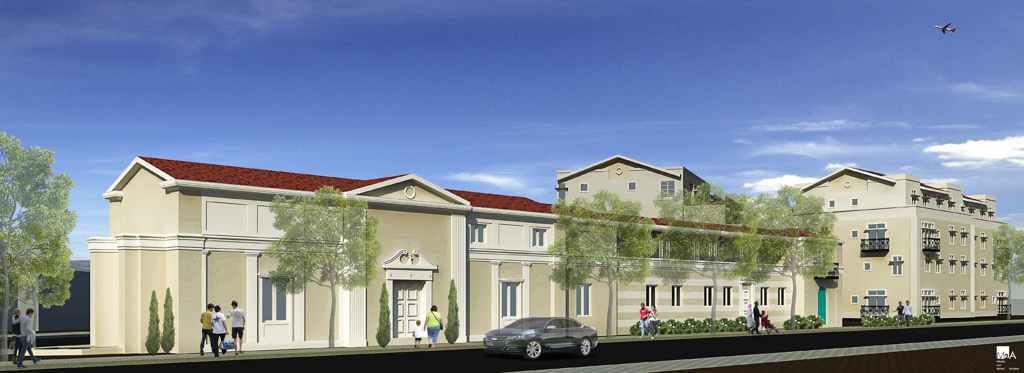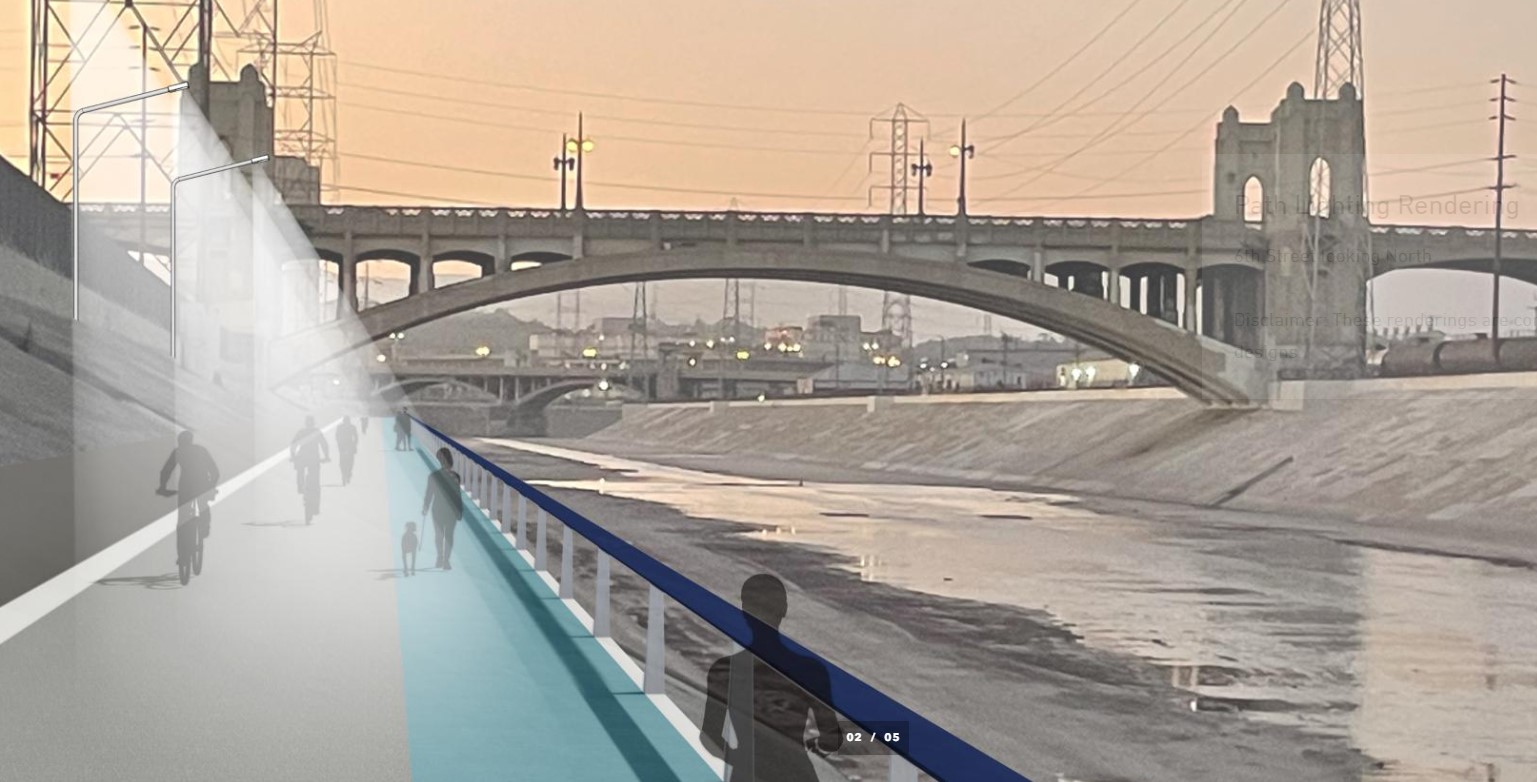Some decidedly unusual housing drama unfolded on social media Wednesday afternoon when the announcement was made, via email blast, Facebook, and Twitter, that the first 400 people - and only the first 400 people - who called a designated phone number would be eligible to apply for one of 40 available spots in the Paul R. Williams affordable housing development at 1010 E. Jefferson Blvd.
South Central residents had been waiting to hear when the project would open since the ceremonial groundbreaking in the spring of 2017.
It had been sad to watch the original site of the Angelus Funeral Home languish and fall into ever greater disrepair, even after being put on the National Register of Historic Places in 2009. So, it had come as welcome news that, once rehabilitated, the site would offer a mix of one, two, and three-bedroom apartments to those earning between 30 and 50 percent of the Area Median Income (AMI) in an area where centrally-located quality affordable housing was increasingly scarce.
Even with all that anticipation, the manner in which the leasing announcement was made still came as a shock.
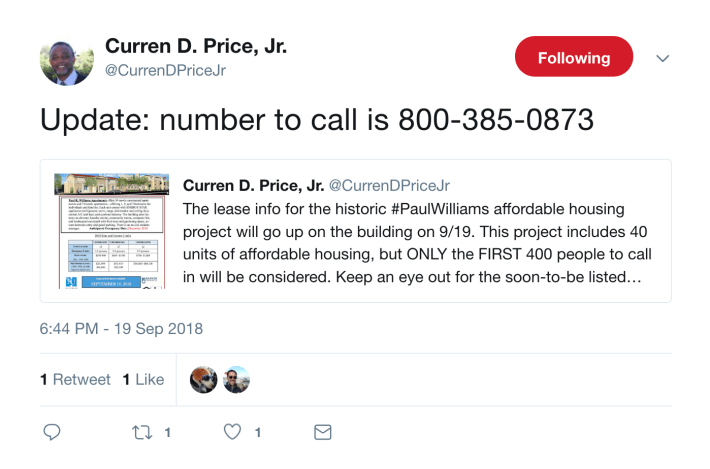
Given the severity of the housing affordability crisis and the barriers those on the margins face in trying to keep abreast of when affordable units come online, leasing applications are generally treated with more care than concert tickets that go to the first ten callers that happen to be listening in.
Instead, to comply with Fair Housing guidelines and guard against any form of discrimination, developers must craft an "affirmative" marketing approach, outreach effort, and application process that reaches a wide range of stakeholders and includes pre-lease up meetings, accommodations for Spanish (and, if necessary, other language) speakers, adequate signage, accommodations for the hearing impaired (a TTY/TDD phone number), and recorded or other kinds of announcements about the pending housing opportunity.
As a result, developers tend to make announcements about leasing opportunities well in advance of the release date. Applications are also made available in a variety of mediums, including physical applications placed around town in public libraries, and are generally supplemented with informational meetings and/or office hours where potential applicants can learn more about the housing project, pick up applications, hear about the application process, and go over eligibility requirements with the developer. And applicants are usually given a window of a few weeks within which to apply.
Some developers take engagement even further by actively involving community members in the design process. TRUST South L.A. spent years organizing and engaging the remaining residents at Rolland Curtis Gardens about the form the renovated building should take. In Boyle Heights, the East L.A. Community Corporation has long done the same with their stakeholders. They even went so far as to support youth-led efforts to see affordable developers granted more time for community engagement to ensure joint-development projects on Metro-owned land were reflective of and responsive to the communities they were sited in.
Even with that level of engagement, "fairness" is still tough to come by, given how great the need is. So tenants tend to be chosen by lottery once all the applications are in (which can number in the thousands, even when only a few dozen spots are up for lease).

In an effort to give his constituents some advance notice of the units coming online on Jefferson, Ninth District Councilmember Curren Price had put out word on the 15th that leasing would open on the 19th. Reposting the flyer released earlier that day by the Hollywood Community Housing Corporation (HCHC), he advised prospective tenants to keep an eye out for that official notification.
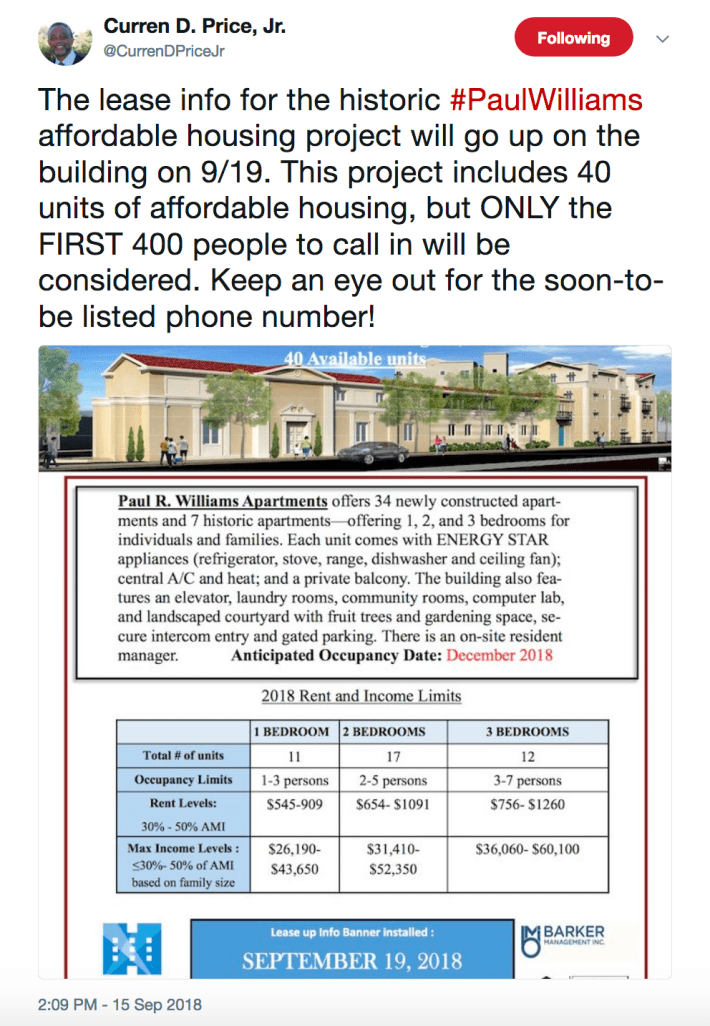
The announcement that the cut-off would be at 400 callers - shared 295 times from Price's Facebook post alone - seemed to have convinced many that they could not afford to be patient.
Chaos promptly ensued.
Over the next few days, residents bombarded his office with queries. Others went by the apartment building hoping to see a banner with the leasing information on it. Some even reported questioning the construction workers about how to get applications.
The responses that racked up under Price's and others' posts on the 19th also suggest that, upon hearing that the developer's phone number would be released at 2:30 p.m., some people dropped everything in order to be free to dial furiously at exactly that moment. Others reported that while they were monitoring online notices they were also in communication with relatives who had gone to the site itself (either to wait for the banner to be put up or in the hopes of getting access to a paper application) to cover all their bases.
The information they shared about their current conditions hinted at what was behind their palpable urgency - some were homeless or in unstable situations, others were currently squeezed into a single room with their entire family, others lived in poor or cramped conditions, and others had had to move great distances from work, family, and where they had grown up because of rising rents.
"I need this!" said one respondent, simply.
But when they began dialing at 2:30, they found that the phone number they were using was incorrect.
Much to their great frustration, the correct number would not be released until some time later - approximately 4 p.m.
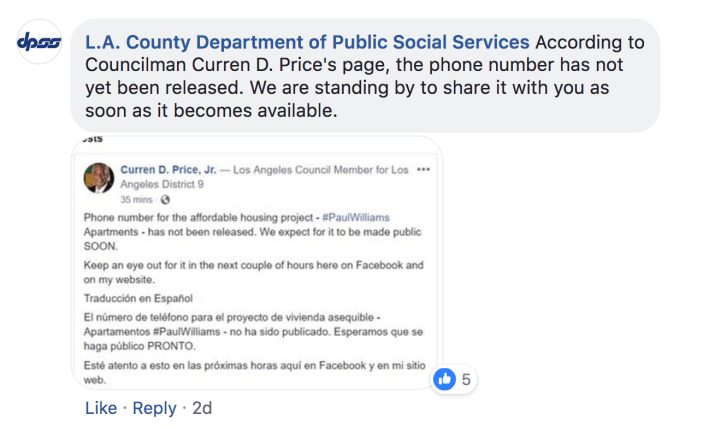
Meaning that those same people who had put everything on hold waited expectantly for at least another hour and a half, fearful that if they looked away or left the site, they would miss the rare chance to be at the front of the line.
Their fears were not unwarranted.
Sarah Letts, Executive Director of the HCHC, said that they received over 5,000 calls on their voice-over-internet line Wednesday.
The number was still working when I dialed it Thursday morning. But the recording asking me to leave my contact information was in English - no other language options were offered despite the fact that Historic South Central is 87 percent Latino. More troubling still, the developer didn't seem to be prepared to engage Spanish speakers' questions, as a Facebook exchange from Thursday morning suggests.
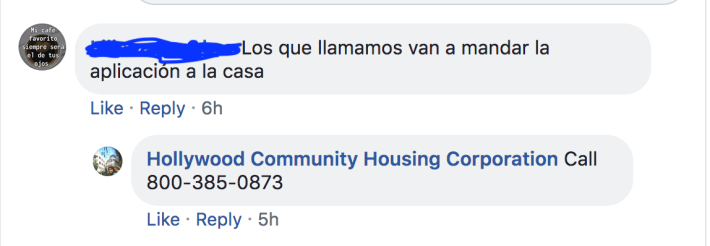
There was also no accommodation for the hearing impaired or those who might have other disabilities.
And there was no way for anyone whose job or other obligations made it impossible for them to call in at 4 p.m. (or even keep up with the phone number saga) to get another shot.
In short, the best-case scenario seems to be that a significant subset of the population was effectively shut out of a housing opportunity, something that calls the integrity of HCHC's process into serious question.
My goal in speaking with Letts was to try to understand how HCHC had arrived at this particular approach to leasing.
As I had noted in a twitter thread Wednesday night, in some ways, the approach could be seen as attractive.
We don't have a way to take the legacy of segregation, disenfranchisement, and disinvestment into account when trying to determine what counts as "fair" for residents of a marginalized community.
Consequently, a major complaint those residents have is that affordable housing projects never truly serve their needs or community members. In Boyle Heights, for example, a community that has a glut of affordable housing coming online, an oft-voiced concern is that opening up the developments to the wider L.A. population increases the likelihood that needy area residents will be pushed aside.
Their fears are rooted in the long history of discrimination the community has endured and the extent to which it has actively been denied access to resources. Those fears are also tied to their current realities. Namely, that as much as a quarter of the population fails to meet minimum income requirements for most affordable units and that most local entrepreneurs lack the necessary capital to rent retail spaces in those new developments.
As a result, affordable housing projects can be viewed as a potential source of gentrification, especially when tied to public investment (as in the case of Metro's joint-development projects).
Blasting the information through South Central networks and taking a set number of names on a first-come, first-served basis could be a way to upend some of those dynamics. At least, in theory. [Certainly, many of those responding seemed excited by how much better their odds would be as part of a smaller applicant pool.]
And in a community like Historic South Central, which has such a rich place in the history of black Los Angeles but ever fewer black residents, creating opportunities for black community members to access a building that specifically celebrates black contributions to architecture could be seen as a step toward addressing some of the harms redlining, disenfranchisement, and disinvestment have imposed upon the community.
But even trying to target disenfranchised residents this way can open the door to another set of problems, namely, having to decide who counts as a member of the community and who doesn't. And without proper safeguards or clarity on why particular communities should be treated particular ways - something existing planning frameworks do not allow contemplation of - the potential for misuse of such an approach is high.
Which is why the leasing process is supposed to be as open and accessible as possible, imperfect as a solution as that may be.
And which is why the rather haphazard way that HCHC appears to have gone about the blast approach is so confusing. They neither geared it to be particularly fair nor tailored it to excessively privilege existing residents in need or address historical injustices. Instead, they largely relied on public agencies and officials to do the work of getting the word out, made no accommodations for the ways in which their method might be discriminatory, and then waited for the phone to ring.
HCHC had recently tried a similar approach for their Palo Verde property in El Monte, said Letts, although that Facebook post had listed a TTY/TDD number, included accessibility information, and avoided setting limits on the number of people that could ask for applications (at least, on the flyer).
Letts also said that HCHC would be holding a meeting in South Central to help demystify the application process for those who were lucky enough to receive applications. No date has been set as yet, however. She also said that they would use the other callers' information to build a "robust" waiting list. Although she did not know if that list would be used to determine who would qualify for the Florence Mills Apartments - the 74-unit affordable development HCHC is building across the street from the Paul R. Williams site.
The councilmember's office did not respond to questions about discussions they might have had with the developer about the wisdom of this approach. And as of publication, there have been no new postings regarding the Paul R. Williams apartments on his or the developer's social media.
Conversations around the leasing opportunity have also gone quiet for now. As many commented Wednesday, now comes the wait to see if they were fast enough on the draw.
"I called for me and my mom," said one of several people who joked with other area residents and wished them good luck. "Somebody is gonna get an application, dammit!"
Did you try calling in to leave your information in the hopes of getting an application? Do you have thoughts on how this compares to other leasing processes you have participated in? Please let us know. Find me on twitter: @sahrasulaiman or via email: sahra[at]streetsblog.org.
